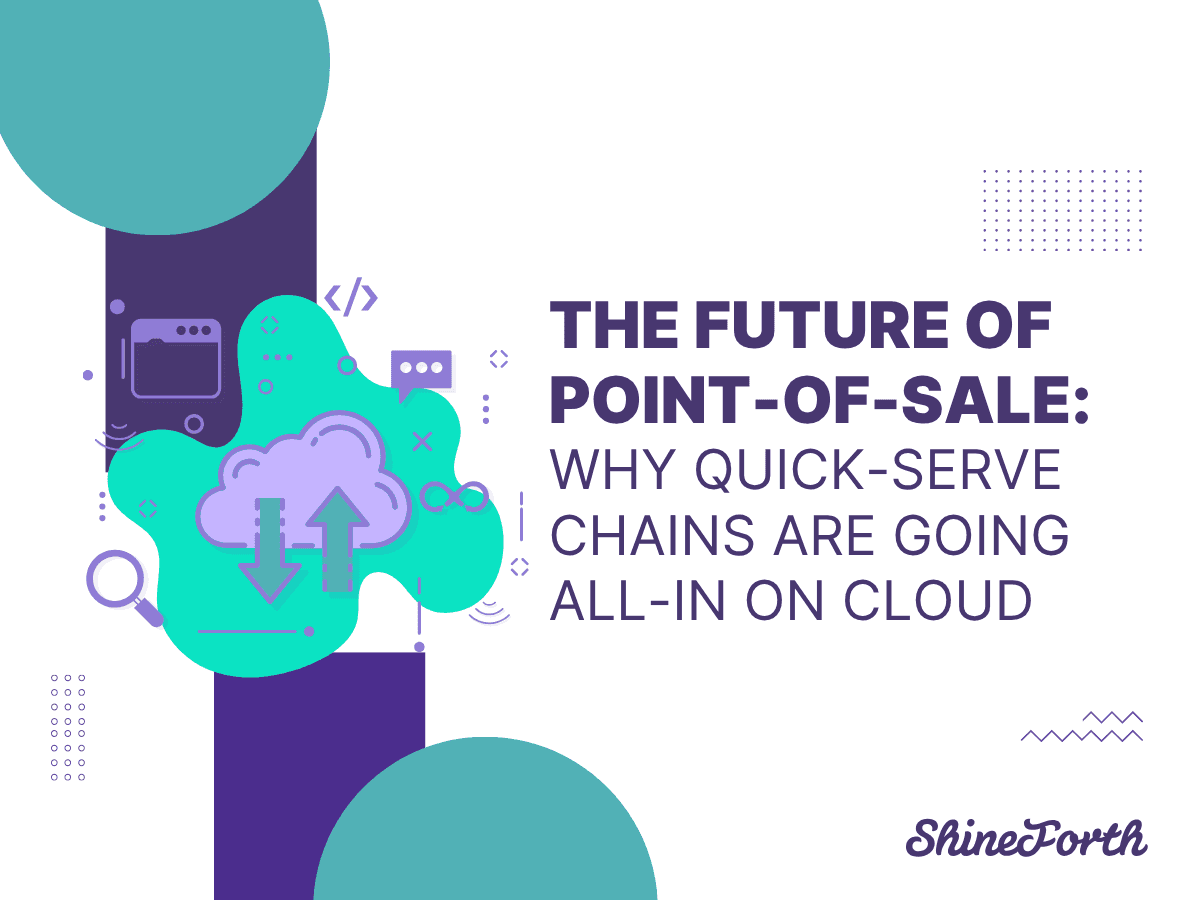The Future of Point-of-Sale: Why Quick-Serve Chains Are Going All-In on Cloud

In the quick-serve restaurant (QSR) world, where speed and accuracy drive customer satisfaction, the point-of-sale (POS) system plays a mission-critical role. Once seen as little more than a digital cash register, today’s POS is evolving into a central command hub that connects ordering, loyalty, inventory, and even customer experience platforms.
What’s powering this shift? Cloud-native architecture. As the pace of innovation accelerates, more QSR brands are leaving behind hardware-heavy, on-premise systems in favor of modern, cloud-based POS platforms designed to scale, adapt, and integrate effortlessly.
The Trouble with Traditional POS
Legacy POS systems were built for a slower, less-connected time. They typically require on-site servers, proprietary hardware, and regular manual updates. This makes scaling a brand across multiple locations a logistical and financial challenge.
Here’s what many QSR operators struggle with in traditional POS environments:
- High upfront and maintenance costs
- Complex, location-by-location rollouts
- Limited integration with mobile, loyalty, and CRM systems
- Data silos that delay decision-making
- Inconsistent user experiences across stores
These systems can quickly become bottlenecks in an industry where responsiveness and adaptability are non-negotiable.
Why Cloud POS Is Winning the Future
A cloud-native POS offloads the heavy lifting to secure, centralized infrastructure—freeing up brands to focus on growth and customer experience. Here are the major advantages:
1. Centralized Management at Scale
Cloud platforms allow operators to manage pricing, menu updates, and employee access across hundreds of locations from a single dashboard—instantly.
2. Real-Time Data and Visibility
Sales data, labor performance, and guest trends are accessible in real time, empowering smarter, faster decisions at every level of the business.
3. Seamless Integration with Other Tools
Cloud-based systems are API-friendly, making it easier to connect with loyalty apps, mobile ordering platforms, third-party delivery tools, and more.
4. Improved Reliability and Support
Automatic updates, remote diagnostics, and offsite backups mean less downtime and better system resilience during peak hours.
5. Lower Costs and Greater Flexibility
Using consumer-grade tablets and web-based interfaces reduces hardware costs and eliminates the need for specialized POS terminals.
How Cloud POS Enables Broader Digital Transformation
Implementing a cloud-based POS does more than modernize the transaction—it opens the door to true digital transformation across your QSR brand. From personalized marketing and AI-powered ordering suggestions to predictive labor scheduling and automated reporting, a strong cloud foundation unlocks innovation opportunities that were previously out of reach.
It also prepares brands to adopt emerging technologies like:
- Voice-assisted drive-thru ordering
- Smart kitchen display systems
- Unified customer profiles across channels
- Centralized product and menu management
Your Competitive Advantage Starts with Infrastructure
A cloud-native POS isn’t just a technical upgrade—it’s a strategic investment. Brands that move early are better positioned to respond to changing consumer expectations, streamline operations, and launch new initiatives with confidence.
For growing QSR brands, this isn’t optional anymore—it’s essential.
Ready to Modernize Your POS?
At ShineForth, we help quick-serve and fast casual restaurant brands plan, build, and deploy cloud-first solutions that scale. From custom integrations to full platform development, our team helps you reduce complexity while increasing performance and visibility.